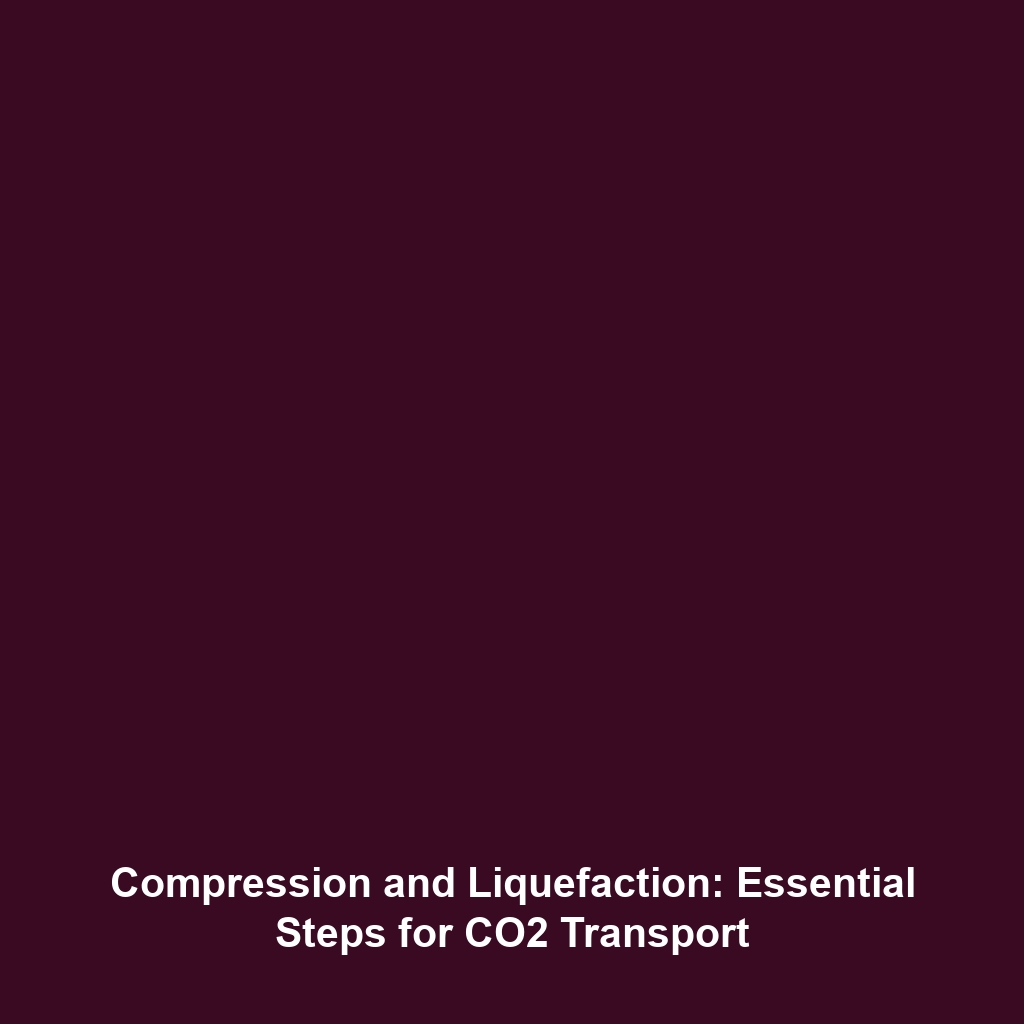<>
Compression and Liquefaction: Preparing CO2 for Transport
Introduction
Compression and liquefaction are crucial processes in the journey of carbon dioxide (CO2) from capture to storage. These techniques enable the efficient transport of CO2, which is essential in the broader context of Carbon Capture & Storage (CCS). By transforming CO2 into a denser state, this process ensures minimal space and costs during transportation. Understanding how compression and liquefaction fit into the CCS framework is vital in the fight against climate change, allowing industries to mitigate emissions more effectively.
Key Concepts
Understanding Compression
Compression involves increasing the pressure of CO2 gas, which decreases its volume. This process is essential before the gas is transported via pipelines. By compressing CO2 to around 1000 psi (pounds per square inch), its volume is significantly reduced, making transportation more efficient. Keywords related to this concept include CO2 compression and CCS technology.
Liquefaction Process
Liquefaction takes the process a step further by cooling the compressed gas to its liquefaction point. At this stage, CO2 can be transported more easily via shipping methods, similar to how liquefied natural gas (LNG) is handled. This process highlights the importance of CO2 liquefaction in the CCS strategy, ensuring a feasible transport method for large quantities of CO2.
Applications and Real-World Uses
The applications of compression and liquefaction in CCS are pivotal in several industries:
- Industrial Emissions Management: Facilities capture CO2 emissions and use compression and liquefaction processes to facilitate transport to storage sites.
- Enhanced Oil Recovery (EOR): Many oil companies utilize captured CO2 for EOR, injecting compressed CO2 into oil fields to increase production.
- Carbon Neutrality Initiatives: Governments and corporations are increasingly investing in CCS projects that incorporate advanced compression and liquefaction technologies.
These applications exemplify how compression and liquefaction serve as integral components of the Carbon Capture & Storage infrastructure.
Current Challenges
While the processes of compression and liquefaction are paramount, several challenges hinder their widespread application in the CCS sector:
- High operational costs associated with large-scale compression systems.
- Energy-intensive nature of the liquefaction process, contributing to overall emissions.
- Limited infrastructure for CO2 transport in certain regions, restricting the deployment of CCS technologies.
- Concerns over the long-term stability and safety of underground CO2 storage sites.
Addressing these challenges of compression and liquefaction is essential for enhancing CCS efficacy.
Future Research and Innovations
Innovations in compression and liquefaction technology are crucial for advancing CCS efforts. Some promising research areas include:
- Membrane Separation Technologies: Development of advanced membranes could reduce the energy requirements for both compression and liquefaction.
- Integration of Renewable Energy: Using renewable resources to power compression processes can enhance sustainability.
- Advanced Materials: Research into stronger, more efficient materials for CO2 transport pipelines can minimize leakage risks.
These advancements have the potential to revolutionize how we approach CO2 transport in CCS.
Conclusion
In summary, compression and liquefaction are critical processes for preparing CO2 for transport, making it feasible to integrate CCS into our climate change mitigation strategies. By understanding their significance, we can better appreciate the role they play in reducing global carbon emissions. To find out more about Carbon Capture & Storage technologies and innovations, explore our other resources that detail further advances in CCS.


